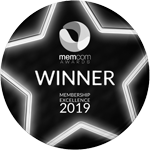Harnessing Open Data for Business Advantage
Seminar held on 5th November 2014 at the Hallam Conference Centre
Report by Barry Leventhal
The main aim of this seminar was to show how users have been applying Census and other open data sources, for a variety of business and research applications.
Chairman’s Introduction
The seminar was expertly chaired by Peter Mouncey, Editor-in-Chief of the International Journal of Market Research. Peter pointed out that the Census and Geodemographics Group (CGG) was celebrating its 25th anniversary this year. For his introduction to the day, he reminded delegates of how the CGG was formed, back in the late 1980s, and identified the role that CGG has played in promoting the use of census and geodemographic information, and working with the ONS and others to represent the needs of the research industry. Peter then went on to introduce the themes to be covered during the day.
Visualising the Richness of Census Data
The opening presentation was given by Alan Smith (ONS), who delivered a series of examples of advanced ways in which data can be presented and visualised. Alan commented that a recent Ipsos Mori survey had measured “emotional innumeracy” and found that people are generally poor statisticians – therefore data providers such as ONS need to do a better job of dispelling common misconceptions. He demonstrated a website which quizzes the user on “How well do you know your area?” This site had received ¼ million hits in the first four days from launch, illustrating the popularity of gamification as a tool for presenting statistics. Alan commented that ONS was keen to show the richness of its data, and often employs graphical animation to show changing patterns over time.
Presentation not available
Shopping Demands – Work, Rest and Play
Graham Smith (CACI) focussed on the need to employ a wide range of data sources when carrying out analysis in the retail sector. He illustrated his talk using case studies on site location for the Southern Cooperative and identifying the hottest postcodes for convenience stores, done for The Grocer. Graham identified the most useful open sources for analysing retail demand amongst workers in an area, including Census workday population and workplace statistics, and also the Business Register Employment Survey (BRES). Graham closed by recommending that a “fitness for purpose” approach should be taken – i.e. open data should not be used simply because it happens to be freely available – and that a combination of sources can sometimes give the best results.
Convenience Store Catchment Area Modelling: The Clue is in the Name
Tim Drye (Data Talk) highlighted the complexity of modelling convenience store catchment areas and demonstrated a two-stage approach that enables brands and retailers to target products and promotions more accurately in convenience stores. The first stage was to understand the local contexts of stores, and Tim’s analysis had identified seven types of store locations and formed a profile of each type. The second stage was to understand the people who frequent each type of location, therefore Tim had created a segmentation of consumer types and analysed their relationships with the location clusters. By overlaying sales data, the most successful combinations could then be identified.
2011 Census Migration and Commuting Data: Why look at Who Moves Where?
Mike Coombes (Newcastle University) first explained the features of flow data from the Census, enabling analysis of commuting flows from home to workplace, and migration flows from previous home to current home. He showed how the commuting flow data had been used to create travel-to-work areas that define local labour markets, and illustrated the results with a series of TTWA maps. He then discussed the creation of housing market areas that partition England into zones based on migration patterns, and illustrated how distance of move varies between owner occupiers and renters. Mike closed by commenting on potential future applications, including work by UCL with Sainsbury’s, on mapping patterns of cultural identity and heritage using Open Data.
The Geodemographics of Use and Engagement with the Internet
Alex Singleton (Liverpool University) demonstrated the marked differences in Internet usage by geodemographic types and illustrated the E-Society classification that mapped these differences back in 2006. However, subsequent changes in infrastructure (e.g. growth in broadband, 4G network) and user behaviour (e.g. use of social networks, internet access via smart phones) had necessitated the development of a new Internet User classification. This had been built using a similar methodology to the 2011 Output Area Classification and further work was currently in progress to refine its use for retail catchment area analysis.
Open Data Update
Nick Halliday (National Audit Office) delivered an update on Open Data developments, on behalf of the Open Data User Group. Nick explained that one of ODUG’s main priorities over the last year had been to support the development of the government’s National Information Infrastructure. The intention was that the NII would contain the data held by the government which is likely to have the broadest and most significant economic impact if made available and accessible outside of government. ODUG had been reviewing what the value of the NII should be and which data should be included in it - the initial approach to identifying NII datasets had been quite limited, in ODUG’s view.
Report from the Open Data Coalface
Blair Freebairn (Geolytix) put forward the view that Open Data was capable of transforming the way that the world does business, citing as an example the data that would be needed for 3D printing to become “mainstream”. He explained that the value of Open Data would come from combining multiple sources together, and mentioned a number of examples - including building a geography of place names, identifying retail “hot spots”, creating a routable road network and developing small area demand estimates using raw census data. Blair felt that the decision to proceed with the 2021 Census was great news, however there will also be new Open Data sources that will help to change and enhance it.
No presentation slides used
Harnessing Census Microdata
Barry Leventhal (BarryAnalytics) introduced the concept of Microdata – samples of raw data on households and individuals drawn from the Census – and summarised its history in the UK. Following the 2011 Census, Microdata products have been produced at three levels of access – public use, safeguarded and secure – for business users, the safeguarded product is likely to be of greatest interest however access may be more difficult. Barry presented case study examples of applying Microdata and summarised the main use cases in market research.
Social and Cultural Influences in the Digital Age
Richard Webber (Origins Info) discussed the importance of neighbourhoods and how much information can be abstracted about people from the neighbourhoods in which they live. Richard demonstrated the importance of neighbourhood effect in various situations, including performance of schoolchildren and voting behaviour. While digital data can deliver highly specific, up-to-date details about consumers, neighbourhood data can supply contextual effects. Richard provided a number of examples of “context” and concluded that digital and contextual sources should be used in combination, as both contribute towards consumer decisions.
Get the latest MRS news
Our newsletters cover the latest MRS events, policy updates and research news.










